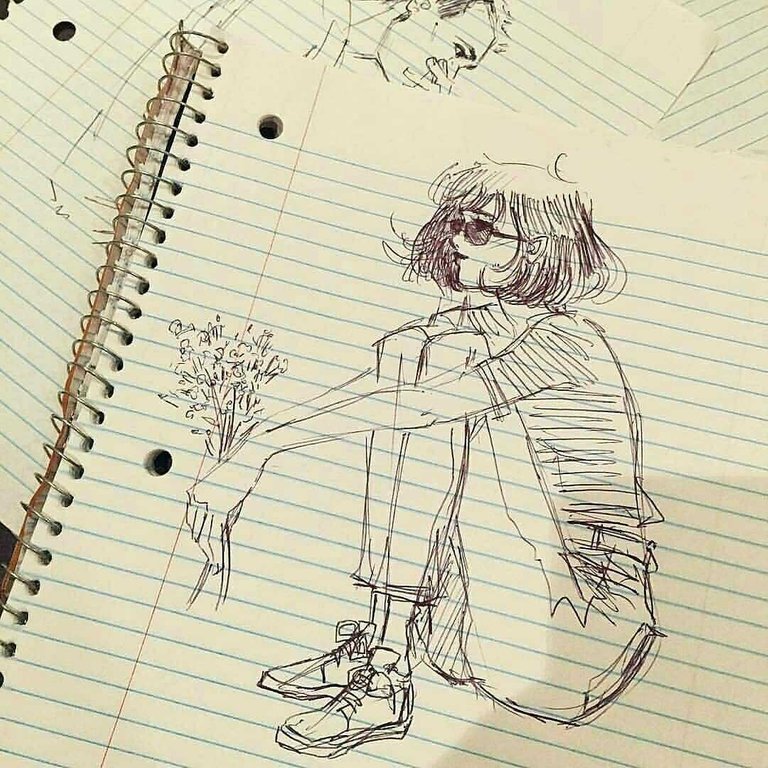
The elements that form the basis of art works include point, line, plane, shape, space, color, texture, and dark light.
Point
Point, point is a small form that has no dimension. Point is the most basic element of art. The point can give birth to a form of ideas or ideas that will then give birth to lines, shapes, or fields. Painting techniques that use a combination of various variations of the size and color of the point known as Pointilisme.Lines
Line, line is a result of real scratches and limit limits of an object, space, series of periods and colors. According to its type, the line can be divided into straight lines, curved, long, short, horizontal, vertical, diagonal, wavy, broken, broken, spiral and other. The impression generated from the various lines can vary, such as straight lines memorable erect and hard, curved lines soft and flexible impression, broken lines memorable stiff, and spiral lines memorable bending.
While according to its form the line can be divided into:
a. The real line, a line produced from streaks or scratches.
b. Pseudo line, is a line that appears because of the impression balans on the field, color or space.Field
Field, plane is a flat shape without thickness, has a display dimension, width and area; has a position, direction and bounded by a line. Field is the development of a line that limits a form to form a plane that covers from several sides. The field has long and wide sides, and has a size.Shape
Shapes can also be grouped into two kinds, namely:
a. Geometric shapes
Geometric shape is a form found in geometry include:Cubic shape, for example cubes and beams.
Cylindrical shape, for example, tube, cone, and ball.
b. Nongeometric shape
The nongeometric shape is a form that mimics the natural form, such as humans, plants, and animals.
Space
Space can be classified into two, namely: Space in the form of real, such as the room in the room, the room on the statue. Space in the form of imagination (illusion), such as a room that impressed from a painting.Color
The impression arising from the reflection of light on the eye is called color. Colors can be grouped into three, namely:
a. The primary or primary colors, which are colors that do not come from any color, include red,
yellow, and blue.
b. The secondary color is a mixture of primary colors.
Example:
red + yellow: orange
blue + yellow: green
red + blue: purple
c. Tertiary colors are the result of a mixture of primary colors and secondary colors.
Example:
itemyellow + green: greenish yellow
blue + purple: purple bluish
orange + red: reddish orange
In addition to the types of colors above there are also neutral colors, namely white and black.Texture
Texture is the nature and state of a surface of a plane or surface of an object in a work of art. Each object has different surface properties. The texture is distinguished into real texture and pseudo texture. The real texture is the same touch value between sight and touch. While pseudo-texture is a different impression between sight and touch.Dark Light
And object can have a different light intensity on each part. Similarly, in art works. Like a landscape painting. The existence of differences in light intensity will cause a deep impression.
And here are some pictures that I describe using some of the ways I have written above.






so explanation this time about art, hopefully useful and do not forget vote my posting in account @haikalyone


Nice Art, and good article